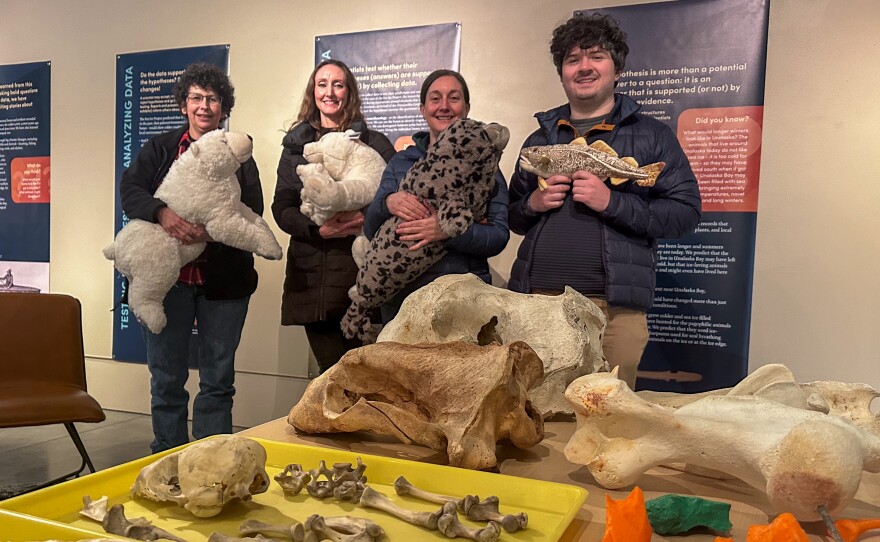Unalaska is famous for its deep-water port that doesn't freeze in the winter, but the island hasn’t always been this warm. A new exhibit at the Museum of the Aleutians tells the story of Unalaska’s icy past and the role sea ice played in shaping the land, its animals and people.
“I would describe this exhibit as telling a story of how scientists understand humans and animals in the past in Unalaska,” said Catherine West, lead researcher for the exhibit.
West and a group of scientists worked together for a decade, researching what Unalaska looked like when sea ice started showing up in the region 5,000 to 3,000 years ago. And now, their work is on display this summer in an exhibit called “The Science and Story of Unalaska’s Sea Ice.”
The researchers started by asking a couple basic questions: What kinds of animals were around then? Did those animals rely on sea ice?
To find the answers, they looked at ancient animal bones from around the island — bones from birds, fish, bears and other animals.
They found that Pacific cod grew larger and birds that tolerate cold temperatures started showing up. They were also able to confirm that polar bears started roaming the island.
West said in the early 2000s, scientists suggested that there were brown and polar bears on Amaknak and Unalaska Islands at one time, but the discovery didn’t go anywhere immediately.
“People didn’t really talk about it until we decided we wanted to know a lot more about those bears,” she said.
With 3D modeling and DNA sequencing, scientists can now prove that bears did live in Unalaska and that they probably traveled to the island on sea ice.
Using bear bones found in archeological dump sites near Margaret Bay and the Amaknak Bridge, researchers have identified what species the bears were, how old they were and what they ate.
But there's more to West’s exhibit than bears.
Scientists also wanted to know if the Unangax̂ people changed the way they caught seals when sea ice started showing up. Before sea ice reached the islands, they relied heavily on hunting in kayaks at open sea.
Typically, in areas with sea ice, seals will make breathing holes. Hunters would stand next to those breathing holes and plunge a harpoon through it to catch the seals. But researchers found that the Unangax̂ hunters didn't use this breathing hole technique. Instead, they continued to hunt from kayaks around sea ice chunks and upgraded their tools as their hunting grounds shifted around them.
They started using the toggling harpoon, a more complex hunting tool than the barbed harpoon, which was used before. The toggling harpoon makes it much more difficult for a seal to escape because once it punctures the seal, it twists further into the seal’s body as it pulls away.
West said that for decades, scientists thought the Unangax̂ people used the same technology over several thousands of years without changing their hunting practices.
“But what we are finding is that’s not true at all,” West said. “They were adaptable. They were flexible, and they did lots of different things through time, which is a much richer story.”
She said the ways Unangax̂ hunters adjusted their methods in response to changes in their environment — like implementing the toggling harpoon — highlights how adaptable the community was to extreme climate change.
The exhibit displays many more examples of sea ice adaptation, and visitors can explore those stories at the Museum of the Aleutians through October.







